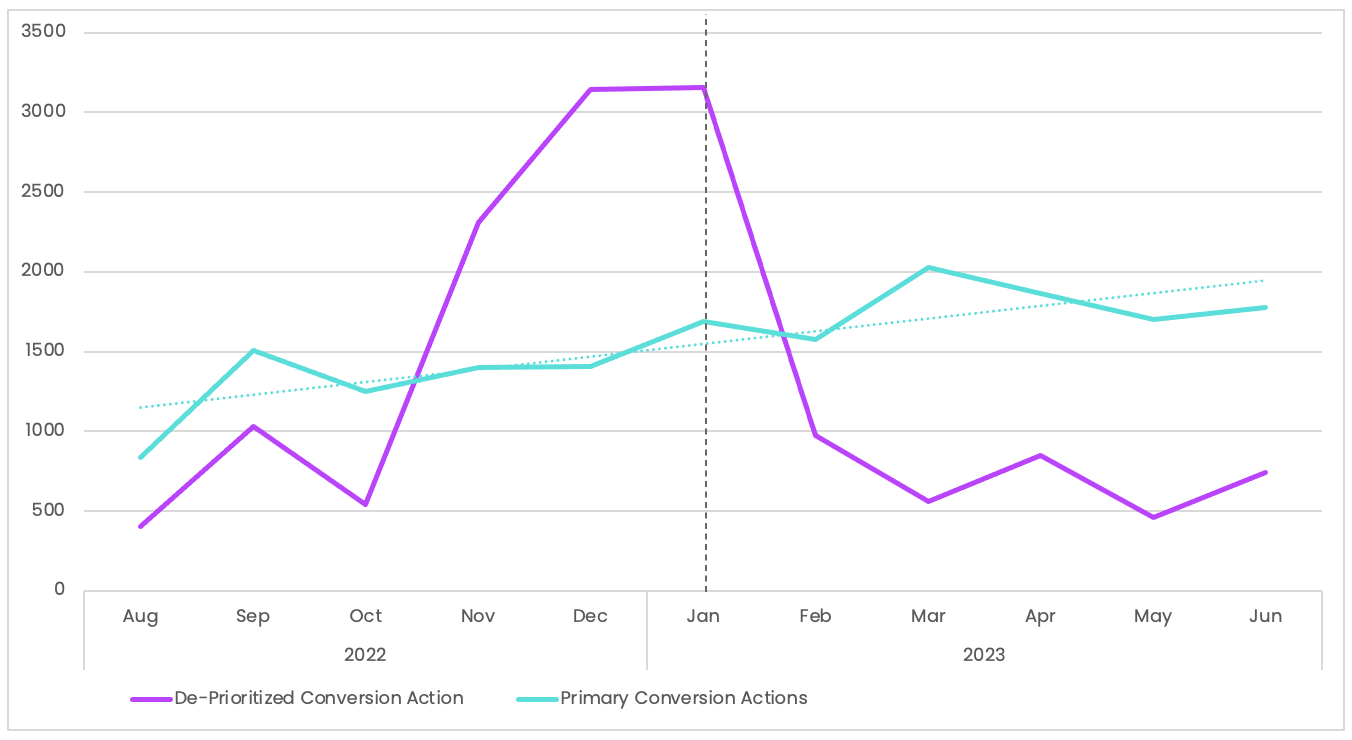Challenge
The Problem: Lowest Value Conversions Dominating, VBB Not Suitable
Our client had been relying on automated bidding to drive conversions efficiently. Automated bidding is typically a great solution as it uses Google's AI to set bids for ads based on their likelihood to result in a conversion; however, the primary issue our team was seeing was that this approach primarily targeted conversions with the lowest value. This meant that while conversion volume was strong, the quality of those conversions was far from ideal and not driving value for the client when measured against their larger business goals. To add to the complexity, we had previously tested Value-Based Bidding (VBB) which enables you to maximize the total value of conversions generated from your campaigns and unfortunately saw negative impacts on performance. Since this is the most common solution for prioritizing conversions, we had to adjust our strategy.
Approach
Our Hypothesis: Shifting Low-Value Conversions to Secondary Will Drive More High Value Conversions
To address this issue, a hypothesis was formulated: shifting low-value conversions to a secondary conversion action as opposed to primary, could prompt Google's AI and automated bidding system to adapt, thereby optimizing towards higher-quality conversions while maintaining a similar CPA. Our rationale was that, when using maximize conversions or a Target CPA (tCPA), automated bidding will optimize for the primary conversions that are easiest to acquire, thus improving its ability to drive higher-quality leads. By redefining the desired conversion actions, we could influence the bidding algorithms to prioritize quality over quantity.
Results
The Outcome: Validated!
After the test was implemented, high-value (Primary) conversions continued on an upward trajectory. By modifying the primary conversion goal, automated bidding started to prioritize higher-value conversions. This was a significant win for the client, as these conversions were more likely to lead to meaningful business outcomes.
In this test, overall conversions decreased 41%, which would have been concerning if viewed in isolation. However, the goal of this test was to improve the algorithm’s ability to optimize for our priority conversions; and it worked. We stayed within our $35 CPA goal, and increased priority conversions by 49%.
Quality over Quantity
In conclusion, by challenging the status quo and experimenting with different approaches, we were able to improve conversion quality to better align with the client's overall business goals, all while staying within the primary CPA target. It also serves as a reminder that the success of a campaign should not only be measured by the quantity of conversions, but by their quality and alignment with the client's business objectives.
